BBC News NI crime and justice correspondent
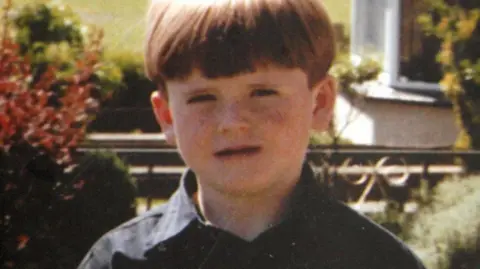 Family photo
Family photoAn eight-year-old boy who was killed in the Omagh bombing had been told by his mother that the Good Friday Agreement peace deal had brought an end to bomb attacks.
Oran Doherty from Buncrana, County Donegal, was one of several schoolchildren who died as a result of the Real IRA explosion in 1998.
His family has been sharing their memories of him at a public inquiry into the attack.
In a written statement, Oran’s mother Bernie said her family will never forgive the bombers.
She said they had brought a large bomb into a crowded market town and so they knew “exactly what could happen”.
The Real IRA bomb killed 29 people, including a woman who was pregnant with twins.
The statement from Oran’s mother was read out by his sister Lisa Dillon.
“My family and I were so happy in April 1998 as the Good Friday Agreement had just been signed,” it read.
“Oran had asked me what the agreement meant and I told him it meant there would be no more shootings or bombings in the north.
“Four months later, Oran was blown up in the Omagh bomb.”
Oran had travelled to the County Tyrone town with his friends that day after a day trip to the Ulster American folk park.
His heartbroken family has kept a jar of his sweets from 1998.
They said when he grew up, he wanted to play football for Celtic or be a shopkeeper.
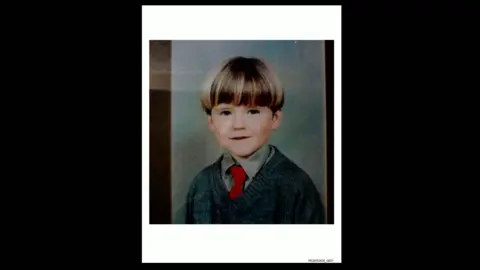 Family photo
Family photoHis mother’s statement criticised the indiscriminate nature of the attack.
“I have listened to and read all the excuses about the fact they didn’t mean to get the bomb go off at the time and in the place, and they didn’t expect anyone to be in the area at the time.
“I do not accept this and I never will.
“If you are prepared to transport a bomb of that magnitude into a crowded market town, then you know exactly what could happen.
“It was a despicable act inflicted upon people of all ages and from both sides of the political divide and all in the name of what?”
The Omagh bomb, which exploded on 15 August 1998, resulted in the biggest death toll from any one single incident during the Troubles.
After years of campaigning by relatives, this inquiry was set to up examine if the bombing could have been prevented by UK authorities.
It has resumed for its second and is continuing to hear from relatives as they give individual accounts of their loved ones and the impact of their loss.
Schoolboy ‘personified hope’ after 1998 peace deal
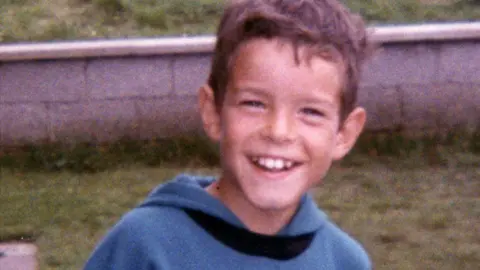 McLaughlin family
McLaughlin familyOn Monday the inquiry also heard from the family of one of Oran’s friends, 12-year old Shaun McLaughlin, who was killed alongside him in the bomb.
They said Shaun personified hope on the island of Ireland after the Good Friday Agreement.
The schoolboy had presented a poem to the then Irish president, Mary McAleese, just months before the attack.
Shaun’s poem read: “Orange and green, it doesn’t matter, united now won’t shatter our dream.”
The inquiry heard that the child was so badly disfigured in the explosion that his father could only identify him from his watch.
‘My son was buried before I could get near his grave’
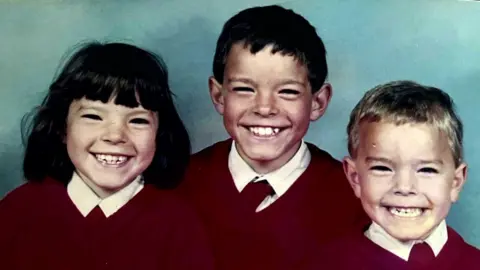 Family photo
Family photoA statement from Shaun’s mother Patricia was read by his aunt Marjory McDaid.
Patricia’s statement described her son’s funeral as a “total farce” with the family’s grief overshadowed by the presence of too many politicians.
“They all even had reserved seats, but there was no reserved seats for the three families who were burying their children,” the statement said.
“My son was buried before I could even get near his grave.”
She also described the traumatic impact his death had on his younger brother and sister, saying they were left in “complete pieces”.
Patricia’s statement went on to say the battle to find out what happened on the day of the bomb has been “relentless”.
“I hope this inquiry will provide answers.”
‘Every day I think about the bomb’
The day’s final inquiry witness was Ronan McGrory, who was best friends with Shaun McLaughlin.
He was badly injured in the bombing – he was 14 at the time.
He found out about the deaths of Shaun and Oran on the TV news a few days later, while recovering in hospital.
He said he was overcome with guilt because he was responsible for looking after them.
“Every day I think about the bomb and it never leaves me,” he said.
“I dearly miss my friend Shaun and I resent the fact his life was taken from him too soon.”
Bride-to-be ‘cruelly robbed’ of future, inquiry told
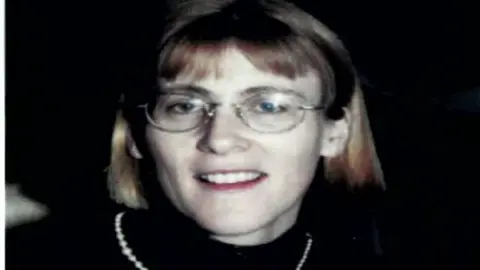 Family photo
Family photoThe inquiry also heard that a Sunday school teacher was on the “brink of a new life” when she was killed.
Esther Gibson, 36, was engaged to be married when she was fatally wounded.
Photos of her growing up were shown at the inquiry and a statement was read on behalf of her family.
The statement described Ms Gibson, who was shopping on the day of the attack, as a devoted Christian.
“She was a young woman with much to look forward to,” her family said.
“Her faith was strong and she was preparing to embark on a new chapter of her life with her fiancé.
“Esther’s murder cut short a life that was rich in kindness, love and promise.”
The day’s final inquiry witness was Ronan McGrory, who was best friends with Shaun McLaughlin.
He was badly injured in the bombing – he was 14 at the time.
He found out about the deaths of Shaun and Oran on the TV news a few days later, while recovering in hospital.
He said he was overcome with guilt because he was responsible for looking after them.
“Every day I think about the bomb and it never leaves me,” he said.
“I dearly miss my friend Shaun and I resent the fact his life was taken from him too soon.”
The inquiry resumes on Tuesday.
Calls for ‘parallel’ Ireland inquiry
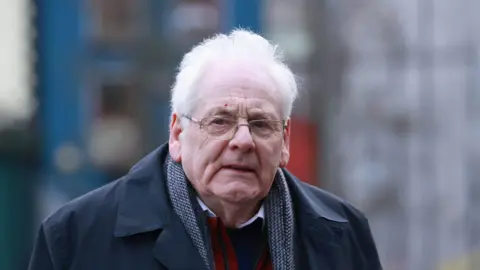 PA
PAMeanwhile the father of one of victims of the bomb has said an “important discussion” on an inquiry in the Republic of Ireland should wait until after the current hearings.
Michael Gallagher told Good Morning Ulster that conversation should be parked until “we get these memorial hearings over”.
It comes after former Irish government minister Charlie Flanagan said Ireland should have established its own parallel inquiry.
He said he was concerned vital evidence may not be seen by the Northern Ireland inquiry.
It cannot compel anyone from outside the UK to give evidence, such as current or former members of An Garda Siochána (Irish police).
The Irish government has promised to help and pledged that, if needed, it will pass legislation to address co-operation.
Sinn Féin leader Mary Lou McDonald said she agreed with Mr Flanagan as there was an issue over compelling people to give evidence.
Stormont Justice Minister Naomi Long told Good Morning Ulster she would be supportive of the Irish government “taking forward an inquiry”.
However she had concerns that two parallel inquiries may mean people having to give evidence more than once and “may mean people having to be retraumatised”.
What was the Omagh bomb?
The bomb exploded in Omagh town centre on a busy Saturday afternoon on 15 August 1998.
The attack took place four months after the signing of the 1998 Good Friday Agreement.
The RIRA – a dissident republican paramilitary group – disagreed with the Provisional IRA’s decision to call a ceasefire ahead of the talks and continued to plant car bombs in towns across Northern Ireland.
But the Omagh bomb was by far the RIRA’s most deadly attack.
In addition to the dead, more than 200 other people were wounded, some of whom survived with life-changing injuries.
Who carried out the Omagh bomb?
Three days after the 1998 attack, the Real IRA released a statement claiming responsibility for the explosion.
It apologised to “civilian” victims and said its targets had been commercial.
Almost 27 years on, no-one has been convicted of carrying out the murders by a criminal court.
In 2009, the judge in that case ruled four of the men – Michael McKevitt, Liam Campbell, Colm Murphy and Seamus Daly were all liable for the Omagh bomb.
The four men were ordered to pay a total of £1.6m in damages to the relatives, but appeals against the ruling delayed the compensation process.
A fifth man, Seamus McKenna, was acquitted in the civil action and later died in a roofing accident in 2013.
#Boys #mother #told #peace #deal #stop #bombs



